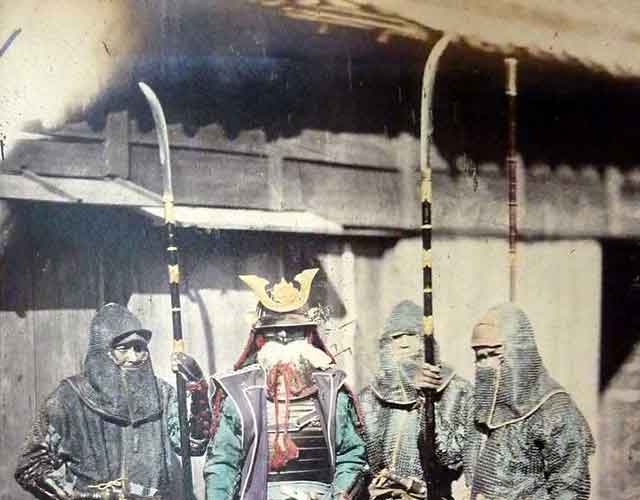
The Nagitana is a formidable weapon that was used by the samurai during feudal Japan. It was a polearm that combined the elements of a spear and a sword, making it a versatile weapon that was effective both at long range and in close combat. In this article, we will explore the history, construction, characteristics, and usage of the Nagitana.
How Nagitana Appeared
The naginata's exact origins are uncertain, but there are three prevailing theories. The first suggests that the naginata evolved from a simple farming tool used for chopping, with farmers in the third century BC attaching sharp stones to long wooden shafts, later replaced by metal. The second theory proposes that the naginata was created directly as a weapon, with the first prototype blades likely made of bronze before steel was introduced. This theory places the development of the naginata after the introduction of metal to Japan from the Asian continents around 200 BC. The third theory suggests that Chinese halberds were brought to Japan during early migrations around the same time, with weapons resembling the eventual Japanese naginata appearing during the Han and Wei Dynasties around 200 AD. Some historians believe that while the Chinese may have invented the weapon, it was refined and used extensively by the Japanese.
Despite uncertainty about its origins, it is well-known that the naginata was used in battle by the 10th century. As cavalry battles became more prevalent, it was challenging to repel mounted warriors using just bows, arrows, and swords. The naginata was a superb weapon for close combat, with sweeping arcs used to cut a horse's legs and kill its rider once the horse fell. During the Gempei War (1180), in which the Taira clan fought against the Minamoto, the naginata gained high esteem. Its extensive use during this period led to changes in warrior armor, with shin guards, or "sune-ate," becoming popular due to injuries inflicted by naginata-wielding warriors.
How Nagitana was Made
The Nagitana consisted of a long wooden pole that was typically made from Japanese oak or bamboo. At the end of the pole was a blade that resembled a sword, with a curved edge and a pointy tip. The blade was usually made from steel and was attached to the pole with metal fittings. The length of the pole varied, but it was typically around 2-3 meters long.
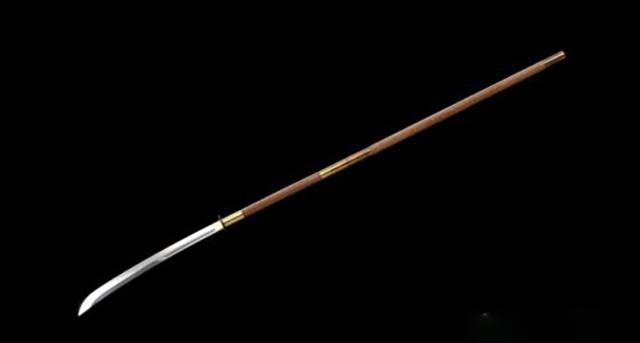
Characteristics and Features of Nagitana
The blade of the Naginata is wider than the Katana, a similar weapon, and has a slight curve. It is also long, with a total length ranging from 11.8 to 27.5 inches (30 to 70 cm), and one-edged, meaning it is sharpened and used for striking from one side only. Additionally, the blade has a sharp point for thrusting and a full tang, starting from the pommel of the wooden shaft, providing strength and reducing the risk of breakage.
The Naginata also has a small, circular guard (tsuba) that enhances the user's grip when holding the long sword. The handle of the Naginata ranges from 3.9 to 7.8 feet (120 to 240 cm) in length and is typically made of wood, sometimes wrapped with a material for better grip. The handle has rings (Semagane) to improve grip and is held together with a peg.
At the beginning of the shaft is a metal pommel that connects to the full-tang blade, providing sturdiness and strength to the weapon. The scabbard (saya) is made of wood and only placed on top of the blade when not in use. The overall length of the Naginata ranges from 4.9 to 9.8 feet (150 to 300 cm), making it a long sword often described as a polearm.
The weight of the Naginata ranges from 3.3 lbs (1.5 kg) to 7.7 lbs (3.5 kg) depending on its size and the materials used. The sword's curvature is mainly seen on the blade, allowing for deadly slashing strikes and thrusting attacks due to its sharp point.
How Nagitana was Used
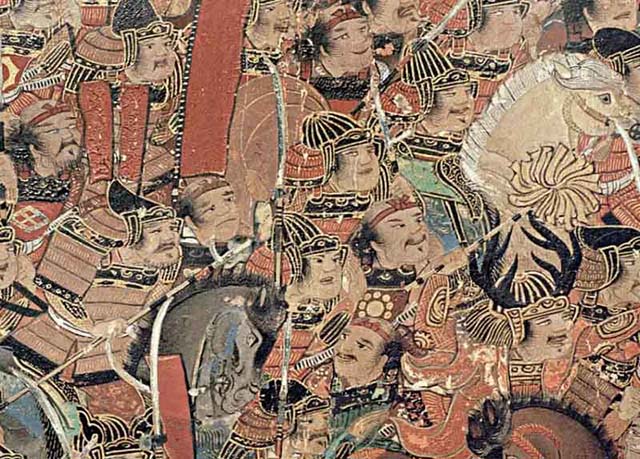
The Nagitana was primarily used by the samurai class, who were trained in its use. The samurai would hold the Nagitana with both hands, with one hand on the pole and the other on the blade. The samurai would use the Nagitana to strike at their opponents from a distance, and then switch to the blade for close combat.
The Nagitana was also used in formation by groups of samurai. They would line up with their Nagitana held horizontally in front of them, creating a barrier that was difficult for enemies to penetrate. The samurai would then thrust and cut with their Nagitana, while their comrades provided support from behind.
The Nagitana was a formidable weapon that was used by the samurai during feudal Japan. Its unique design and features made it an effective weapon on the battlefield, particularly against cavalry. The Nagitana was a versatile weapon that could be used for both thrusting and cutting, and was used by both individual samurai and groups of samurai in formation. While the Nagitana is no longer used in modern warfare, its legacy lives on as a testament to the ingenuity and skill of the samurai.
See also
-
Sojutsu - The Art of the Spear
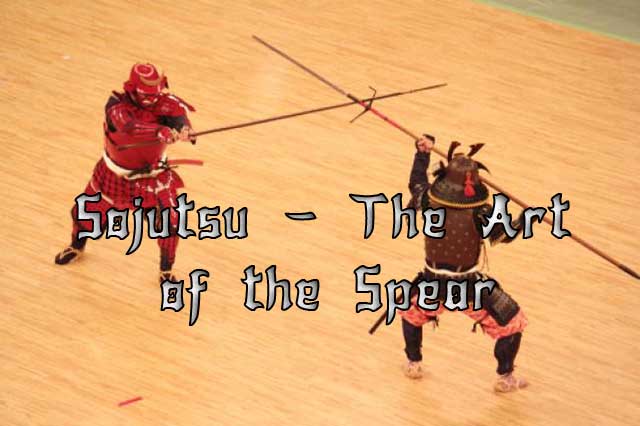
Sojutsu is a traditional Japanese martial art dedicated to the mastery of the yari spear. It is considered the second most important martial art of medieval Japan after swordsmanship.
-
Yari
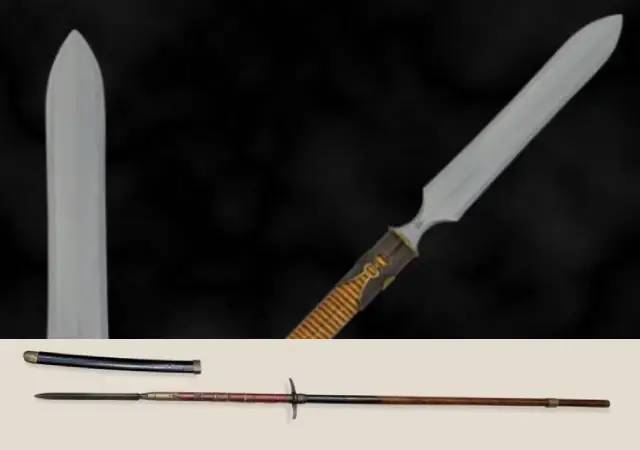
Yari is one of the traditional Japanese cold weapons (nihonto), which is a spear with a straight tip. The art of wielding a yari is known as sojutsu, a spear fighting technique.
-
Wakizashi and tanto

In the history of Japanese edged weapons there are objects that border between the concepts of “sword” and “knife”. This is especially true of the wakizashi, a short sword traditionally carried by samurai along with the katana, and the tanto, a combat knife popular among a wide range of social classes. Both items were worn behind the belt, had a short blade, and were used in close combat. However, there is a fundamental difference between the two, and it goes far beyond simple blade length.
-
Katana and Tachi
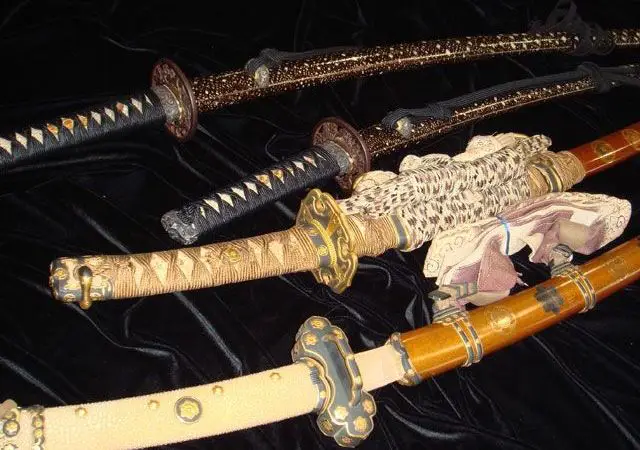
When Westerners think of Japanese swords, they often picture the iconic curved blades like the katana. However, in terms of historical precedence and prestige, it would be more accurate to reverse this image—the tachi predates the katana and traditionally held a higher status.
-
Daisho: The Origins and Evolution of the Samurai Sword Pair
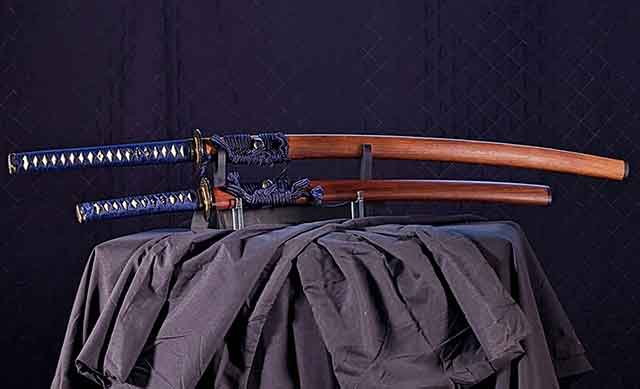
The term "daisho" finds its roots in the combination of two Japanese words: "daito," denoting a long sword, and "shoto," signifying a short sword. The combination of the words daito and shoto made the word. Daisho referred to the practice of wearing both a long and short katana together, regardless of their matching characteristics. While the classic depiction of daisho involves a katana and wakizashi (or tanto) in matching koshirae, any pairing of a longer sword with a tanto can also be considered a daisho. It later came to mean two swords with coordinated fittings. While having blades from the same swordsmith was an option, it was not a requirement for a pair to be classified as a daisho, as this would have been a more costly choice for a samurai.
-
Tanto
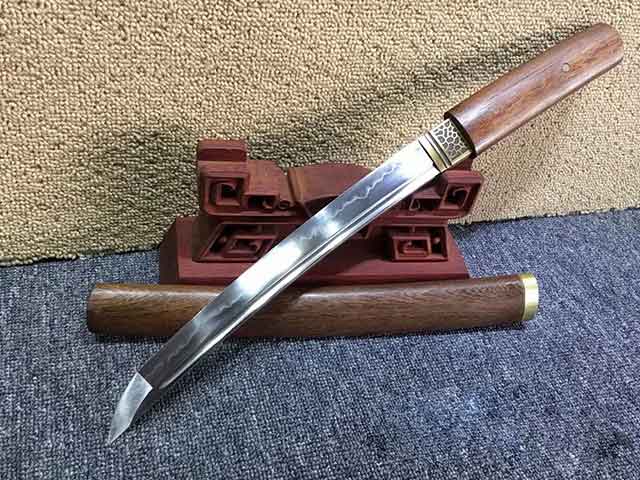
The Tanto knife is a traditional Japanese dagger that was once an integral part of the samurai warrior’s arsenal. It is known for its unique shape and cutting ability, and it is still revered by many martial artists and knife enthusiasts today.
-
Tachi
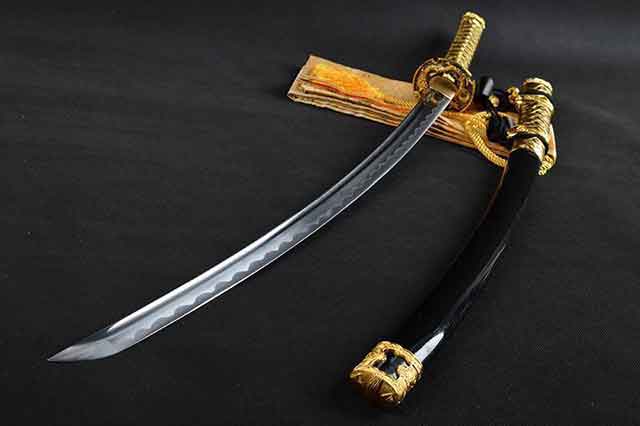
The samurai sword known as Tachi is one of the most iconic weapons in Japanese history. Its unique design and construction made it a popular choice among samurai warriors, and it played a significant role in many battles throughout Japan's history.
-
Wakizashi
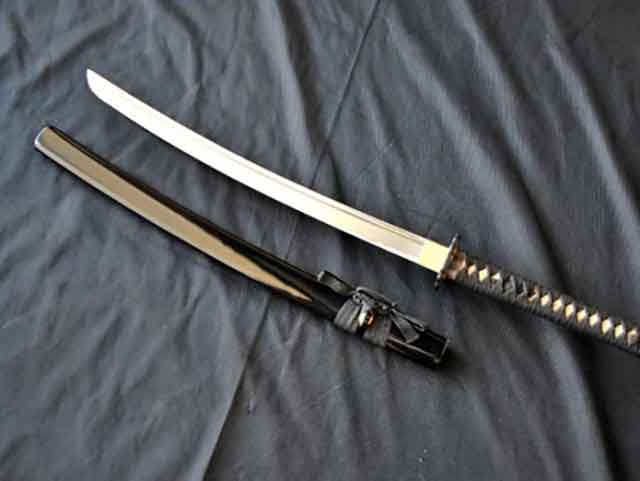
How did Wakizashi come about
The wakizashi, also known as the companion sword, is a traditional Japanese short sword that was widely used by the samurai warriors during the feudal era in Japan. This versatile sword has a long and rich history, and has played an important role in Japanese culture and warfare for centuries.

